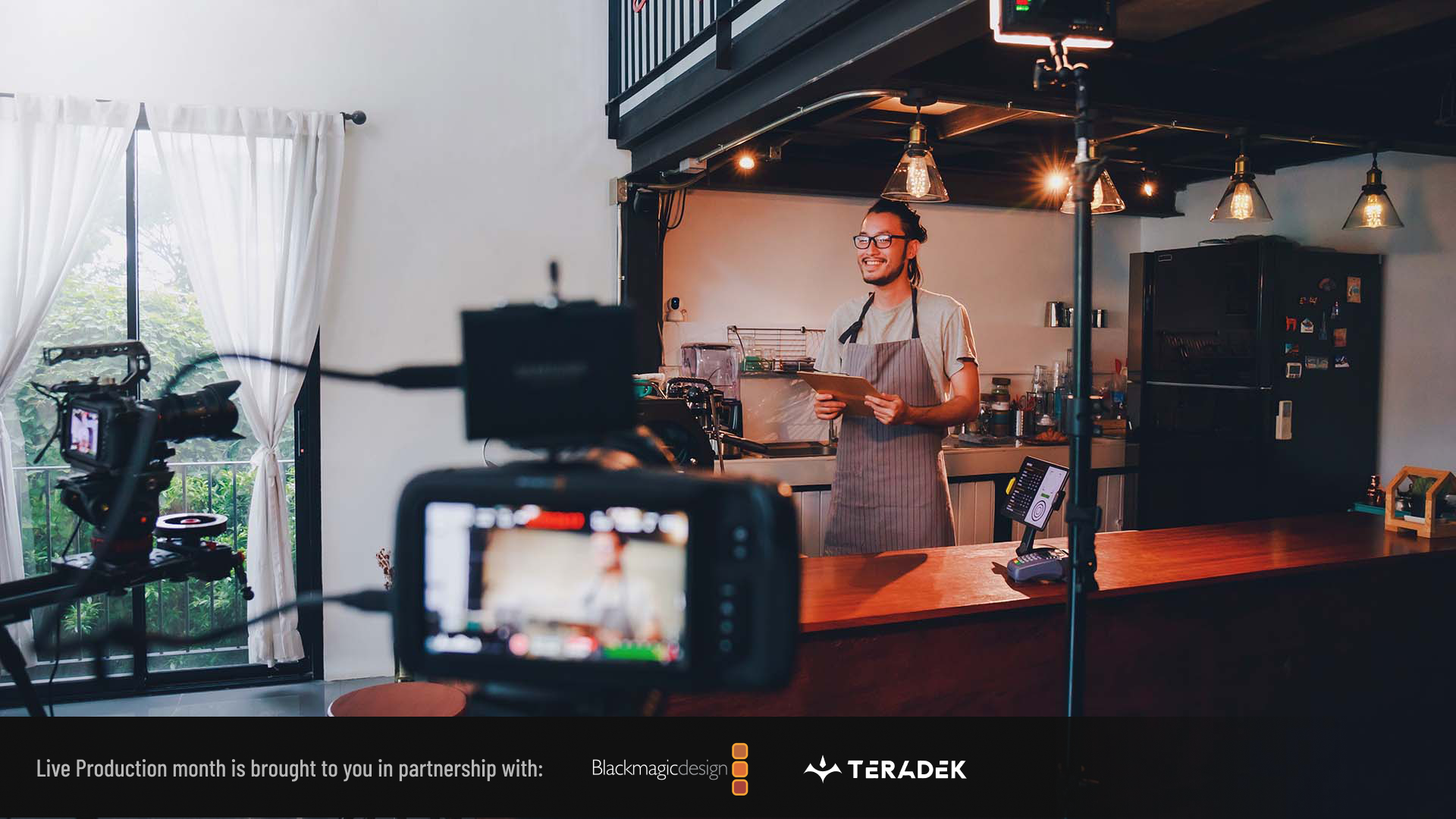
Replay: Want to produce a live stream but don't know where to start? Here's our guide to starting your very first live broadcast over the internet.
Today we consume content more than ever before and therefore producing content that is truly engaging is important. Live streaming is a way to produce and deliver live video content to your audience in real time. It is also one of the most efficient ways to gain people’s attention.
Broadcasting to thousands or even millions of people used to be seen as only being achievable on television with fairly large budgets and high-end equipment. As a result of the prevalence of mobile phones and efficient laptops, now anyone can share their video streams easily through the wonders of the internet.
Whether you’re a beginner with zero live production experience, or an amateur live streamer wanting to learn more, this is the article for you. We will cover all the basics you will need to know to get started.
Why live streaming?
Live streaming technology enables you to watch, create and share videos in real time. These live videos are more interactive than VOD (video on demand) and it lets you engage more with your viewers. Whether it’s streaming video to stay connected with customers, streaming events online, or staying in touch with employees while they work remotely, live video content is now appearing everywhere.
One of the biggest benefits of live streaming is the engagement and all of the feedback that you can get from your audience in real-time.There’s also the added benefit of the longevity of the replay and the option to convert it into an episode or even a podcast. However, live-streamed video is only engaging if it is well produced. Poor lighting, buffering audio and glitching video can easily arrest attention and turn viewers away. This makes you and your brand look unprofessional. By learning how to live stream like a pro, you need to know what equipment to use and how to use them.
What to consider before live streaming
90 seconds is, apparently, the most a viewer will tolerate a poor quality stream for. This means you have one and a half minutes to capture your viewer’s attention. Your streaming setup comes down to a bulletproof audio hosting platform and video solution that establishes a connection between the encoder and the live streaming software. Once everything works as expected, you’ll be able to start recording and your viewers will be watching your live content in no time.
- Camera: Depending on your budget, you can invest in a camera to level up your live stream footage. There are also other entry-level video cameras that are more affordable and lightweight.
- Audio: Don’t overlook your audio quality during your live stream. We can’t recommend highly enough investing in proper audio equipment instead of relying solely on the ones built into the camera.
- Lighting: You can live stream with a good natural light, but we all know this is not always the case, and it’s unreliable. If you’re looking for a consistent look, a combination of dimmable LED lights with adjustable colour temperatures can really help you to create a better looking video no matter the location or the weather.
- Encoder: In short, a video encoder is the computer software or a standalone hardware device that will get your content onto the Internet. Video encoding is compressing video files so they are not saved as individual images but as one fluid video. A dedicated hardware encoder is the most robust option for a reliable stream.
- Internet connection: Last but not least, you need a reliable Internet connection with a proper bandwidth to make sure your stream doesn’t freeze or even drop off suddenly. The best type of internet connection for live streaming is Ethernet, but WiFi comes a close second.
If you want to know more about the equipment, we recently published an article about essential gear for live streaming here.
Where to live stream
A streaming destination is an online site or app where your live stream becomes available to others. In other words, these are commonly referred to as content delivery networks - CDNs. Popular free CDNs include platforms like Youtube and Twitch or you can use social media such as Facebook Live, Instagram Live and LinkedIn. YouTube is an entire streaming platform on its own and it offers a range of live streaming options. Twitch is a more gaming-focused service and is the world’s premier eSports broadcaster.
There are paid streaming platforms as well that provide more options for streaming: where it is streamed, how it is presented, who sees it and whether you want it monetised. Vimeo, Vimeo Livestream, StreamShark and Datacast are good for large events such as concerts and sport events. There are also more specialised platforms like Streamingchurch.tv that are solely intended for streaming church services.
Five steps for easy streaming
- Connect your audio and video sources that capture content for live streaming to your streaming device (PC or laptop).
- Configure the encoder to translate the audio and video content into streamable files to be shared on the internet (resolution, frame rate, and bitrate).
- Connect the encoder and streaming platform using the stream key and URL that your streaming platform provides.
- Test everything beforehand. Testing your live stream on a private channel or fake account, testing the connection speed, sound quality and video quality are all an essential part of getting ready for a live stream.
- Go live!

Tags: Production Studio & Broadcast Live


Comments